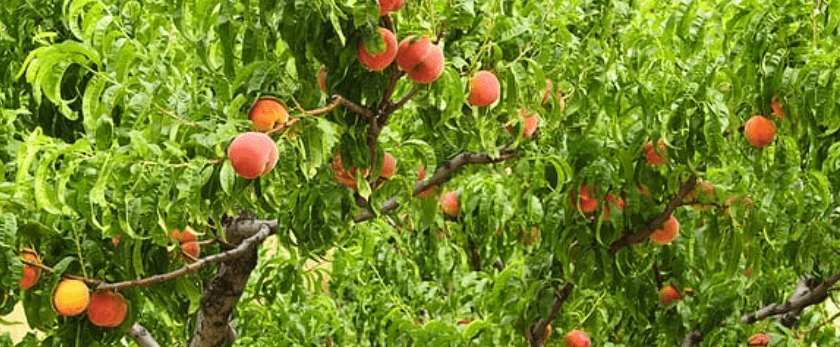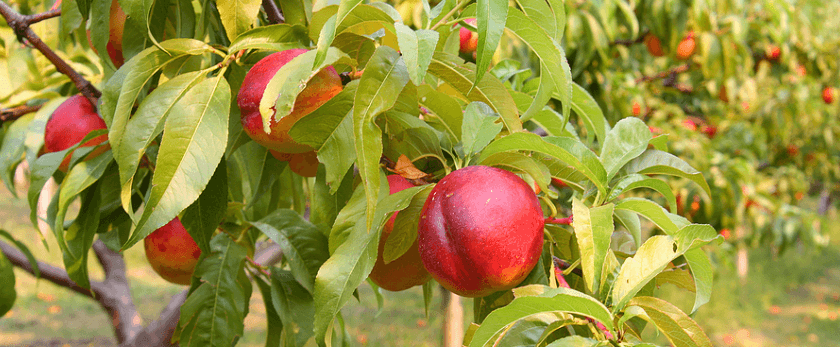Nectarines are a delicious and nutritious fruit that can be grown in your own backyard. Not only do they provide a tasty snack, but they also offer numerous health benefits, such as being high in vitamin C and fiber. Plus, growing your own nectarines is a great way to reduce your carbon footprint and promote sustainable living.
In this article, we will discuss the steps to successfully grow nectarines in an eco-friendly manner. From caring for your nectarine tree to common problems and the best time to grow, we've got you covered. So let's get started!
How to Care for Nectarine Trees
Nectarine trees require proper care and maintenance to thrive and produce healthy fruits. Here are some essential tips to keep in mind when caring for your nectarine tree:
Watering
Nectarine trees need regular watering, especially during the first few years of growth. The key is to keep the soil consistently moist, but not waterlogged. A good rule of thumb is to water deeply once a week, rather than shallowly every day. This will encourage the roots to grow deeper and make the tree more resilient to drought.
During hot and dry weather, you may need to water your nectarine tree more frequently. However, be careful not to overwater, as this can lead to root rot and other diseases. It's best to check the soil moisture level before watering by sticking your finger about an inch into the soil. If it feels dry, it's time to water.
Light
Nectarine trees thrive in full sun, so make sure to plant them in a spot that receives at least 6-8 hours of direct sunlight per day. If your area experiences extremely hot summers, consider providing some afternoon shade to protect the tree from sunburn.
Soil
Nectarine trees prefer well-draining, loamy soil with a pH level between 6.0-6.5. If your soil is too acidic, you can add lime to raise the pH level. On the other hand, if your soil is too alkaline, you can add sulfur to lower the pH level. It's best to test your soil before planting to ensure it's suitable for nectarine trees.
Fertilizer
Nectarine trees require regular fertilization to promote healthy growth and fruit production. You can use organic fertilizers, such as compost or manure, to provide essential nutrients to the soil. It's best to fertilize in early spring before the tree starts to bloom and again in late summer after the fruit has been harvested.
Pruning
Pruning is essential for nectarine trees to maintain their shape, promote air circulation, and remove dead or diseased branches. It's best to prune in late winter or early spring before the tree starts to bloom. Make sure to use clean and sharp pruning tools to avoid damaging the tree.

What is the Best Time to Grow Nectarines?
The best time to grow nectarines depends on your location and climate. Generally, nectarine trees are best planted in late winter or early spring when the soil is workable and the tree is still dormant. This allows the tree to establish its roots before the growing season begins.
If you live in a colder climate, you can also consider planting a dwarf nectarine tree in a container and bringing it indoors during the winter months. This will allow you to enjoy fresh nectarines even in colder regions.
Common Problems with Nectarine Trees
Like any plant, nectarine trees can face various problems that can affect their growth and fruit production. Here are some common problems and how to address them:
Pests
Some common pests that can affect nectarine trees include aphids, mites, and peach tree borers. To prevent these pests, you can use natural methods such as introducing beneficial insects, like ladybugs, or using organic insecticidal soap. It's also essential to keep the area around the tree clean and free of fallen fruits and debris, as they can attract pests.
Diseases
Nectarine trees can also be susceptible to diseases such as brown rot, leaf curl, and powdery mildew. To prevent these diseases, make sure to plant disease-resistant varieties, provide proper air circulation, and avoid overwatering. If your tree does get infected, remove and dispose of the affected branches and treat the tree with organic fungicides.
Lack of Pollination
Nectarine trees require cross-pollination to produce fruits. If you only have one tree, you may not get a good harvest. To ensure proper pollination, consider planting another nectarine tree or a different variety of peach tree nearby.
Conclusion
Growing nectarines is a rewarding experience that not only provides delicious fruits but also promotes sustainable living. By following the tips mentioned above, you can successfully grow nectarines in an eco-friendly manner. Remember to care for your tree by providing adequate water, sunlight, and nutrients, and addressing any problems that may arise. With a little effort and patience, you'll be enjoying juicy, homegrown nectarines in no time!










